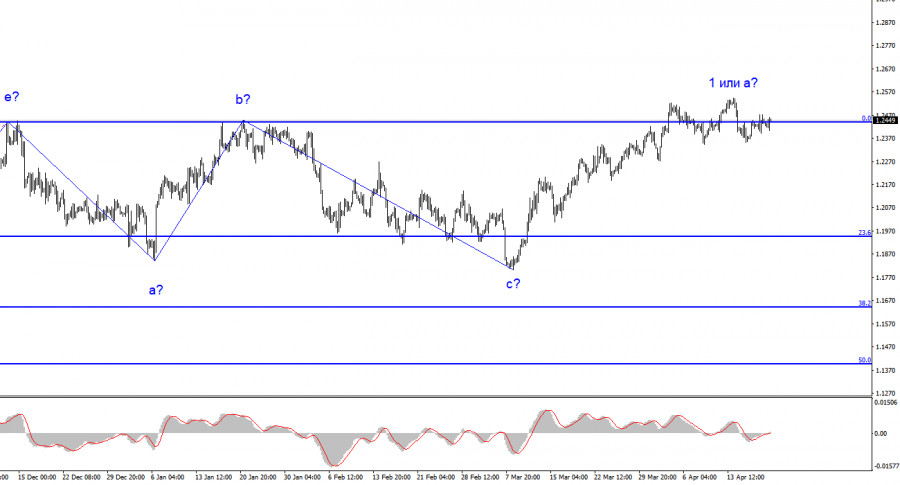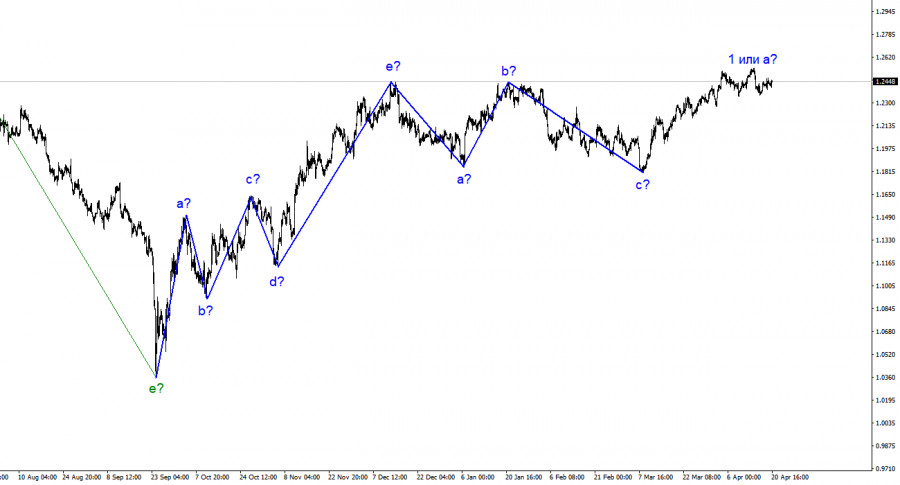

The wave analysis for the GBP/USD pair still looks complicated because it does not look like a classical corrective or impulsive trend segment. Since the current upward wave went beyond the peak of the last wave b, the entire downward trend segment, consisting of waves a-b-c, can be considered complete. Although it is very weakly similar to the trend segment for the same period in the euro currency, it must be admitted that both pairs built downward three-wave sets of waves. If this assumption is correct, a new upward trend segment has begun for the pound. Since I can single out only one wave starting from March 8, there is every reason to assume that forming a new trend segment will take a long time. Both pairs should build similar wave formations. If this is indeed the case, wave 2 or b for the pound may be extended, and at the same time, a downward three-wave set can be built for the euro. Thus, I expect a deep wave b, as in the case of building the previous three-wave set. Therefore, it is possible to expect a decline in the pair to the level of 1.1850 or slightly higher.
The GBP/USD rate increased by 15 basis points on Thursday. The movements during the day were weak, the amplitude was low, and a rate change of 15 points did not even deserve attention and analysis. The pair remains near the peak of wave 1 or a, which is presumably complete. Both pairs can start building downward waves or sets of waves in the near future. The market takes a rather cautious position, and the reasons for this are unknown. This week, there was much more important data for the pound than for the euro or the dollar. The unemployment rate, inflation rate, and jobless claims could have pushed the pound to more active movements. But in reality, it is being thrown from side to side between the 24 and 25 figures, which complicates working with the pair. Horizontal movement (what we are observing now) is always a problem for market participants.
A separate issue now is the uncertainty regarding the Bank of England's interest rates and the prospects for inflation. Inflation in the UK is falling too slowly, and interest rates have reached almost maximum levels. The Bank of England can raise the rate 2-3 more times by 25 basis points from 4.25%, but not higher than 5% – a level that perhaps even the Bank of England does not foresee. Analysts do not expect such strong growth, and although the pound is holding at peak levels, it is not continuing to rise. The market is in confusion. It may take some time to get out of it. During this time, the pair may move horizontally.

The wave pattern of the GBP/USD pair suggests the formation of a new downward wave. The wave analysis is currently ambiguous, as is the news background. I do not see factors supporting the pound in the long term, and wave b can be very deep. A decline in the pair is more likely now, as all the waves recently have been approximately the same size. Trading can now be done from the 1.2440 level, which corresponds to 0.0% Fibonacci. Below it – we sell with targets 300-400 points lower; above it – we cautiously buy.
The picture is similar to the EUR/USD pair on the larger wave scale, but there are still some differences. At this time, the ascending corrective trend segment has been completed. But the three-wave downward segment may also have been completed. And the new ascending trend segment can also be three-wave or horizontal.